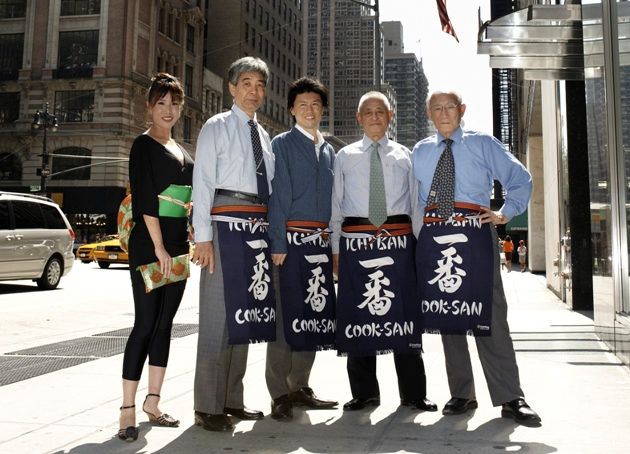
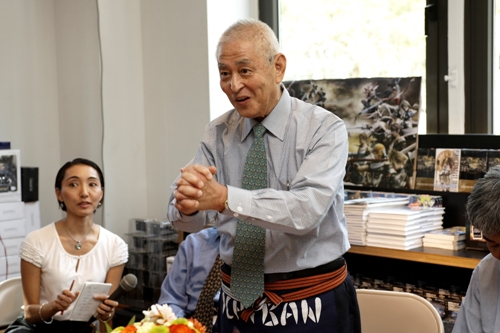
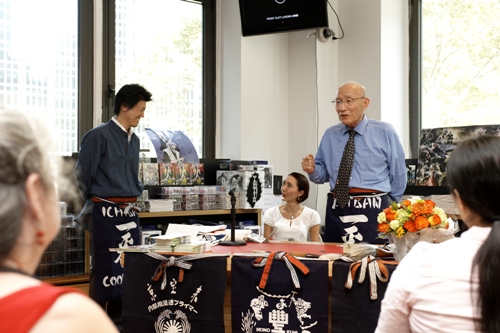

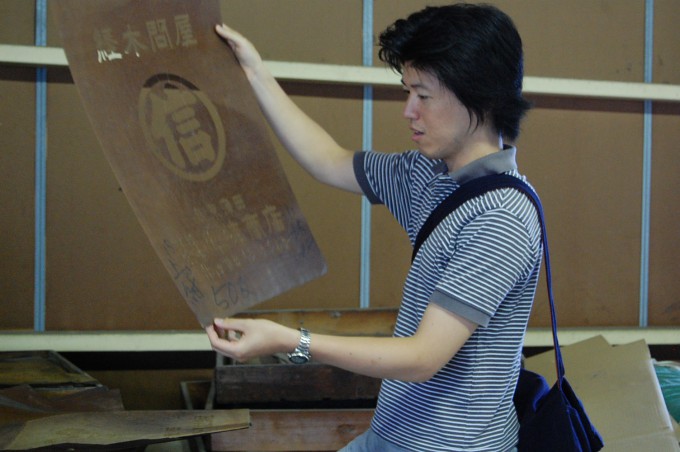
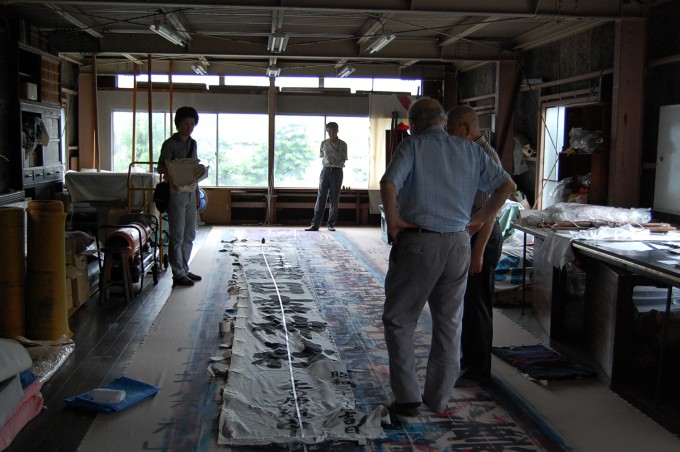
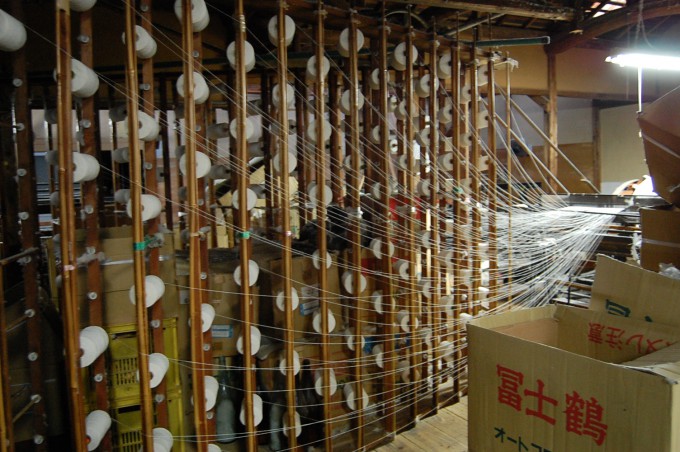
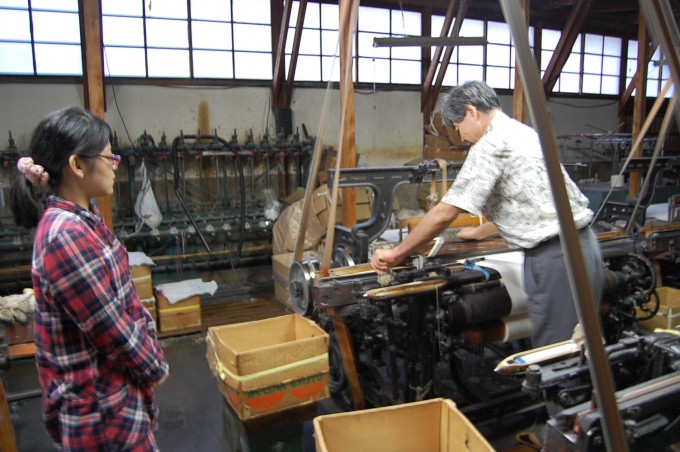
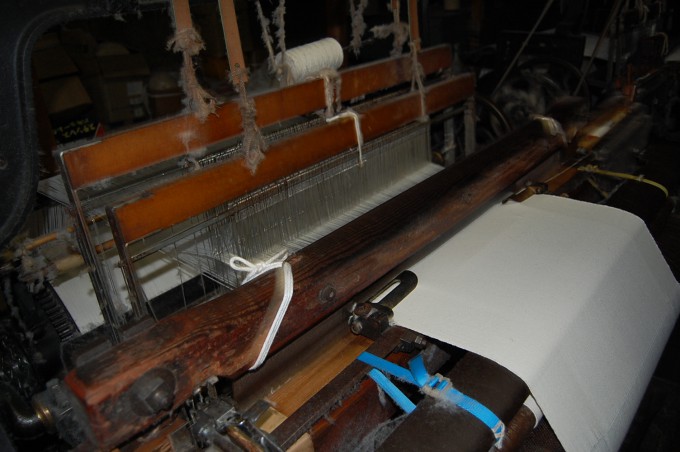
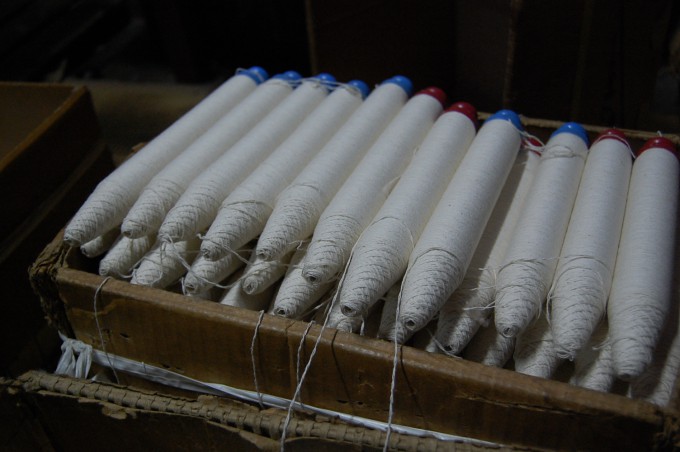
Japanese Traditional ‘Professional Gear’ M A E K A K E
日本伝統のプロフェッショナル仕事着・前掛け
Reasons for the Long Success of Maekake
Three main reasons have contributed to the ongoing popularity of maekake.
1. During work, the apron prevents clothing from being torn or soiled, and can protect the legs against injury.
Workers often used wooden crates to carry things, and the thick cotton of the maekake proved very effective in protecting their trousers and legs from being caught on nails or splinters, which could ruin clothing and even cause injuries.
2. With the company or store name printed on the apron, workers could express their pride in their work as well as advertise their company. Such maekake were often given to customers as a promotional item.
Maekake thus take on a communicative function, reinforcing the company’s name and logo in the minds of customers, and declaring both the type of work the wearer is involved in and the sense of pride and responsibility he brings to it.
The sturdy fabric of maekake can last for decades. As the garment ages the Japanese indigo fades, reflecting the long work and experience of its owner, whose affection for the apron deepens. It’s not uncommon for maekake to be passed from father to son, or for retiring presidents to hand on their aprons to their successors.
3. Tied tightly around the hips, the wide straps of the maekake can offer some support to the lower back, helping prevent injuries from lifting heavy goods.
For centuries, maekake have been used by people whose work involved standing for prolonged periods or carrying heavy objects. Maekake can help prevent the back problems caused by such work.